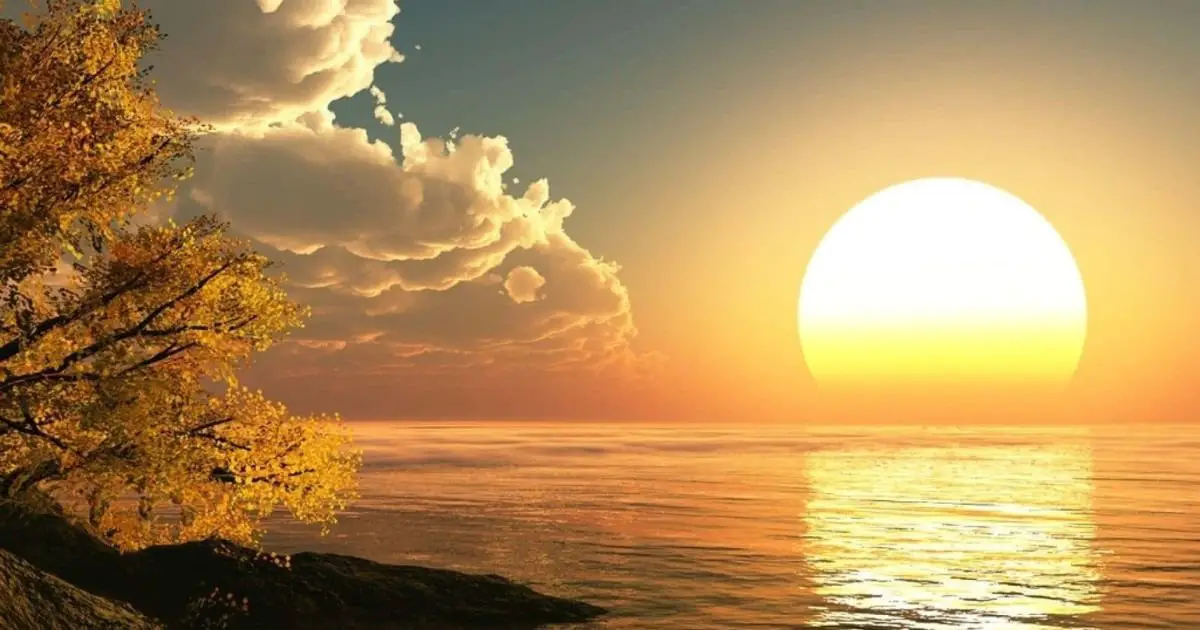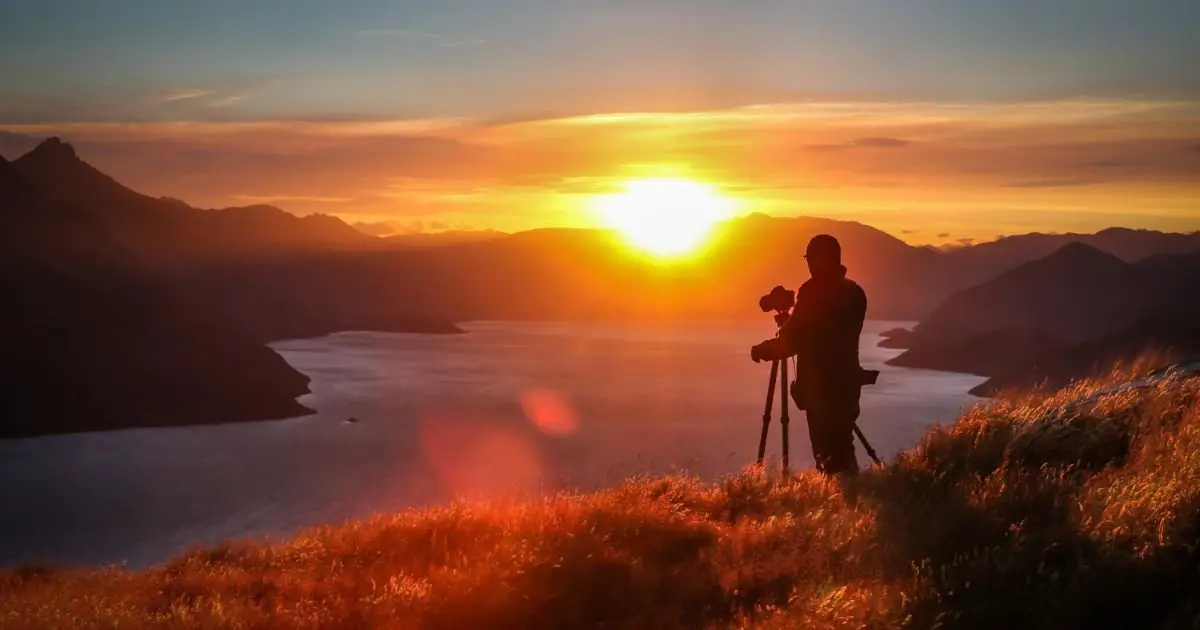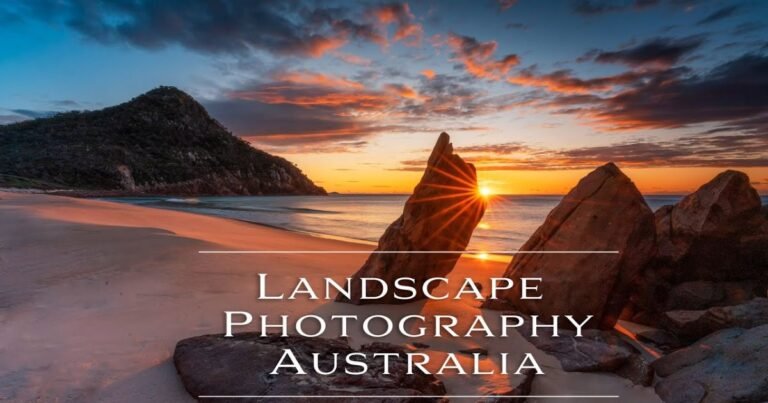
Sunset nature photography focuses on the natural environment at the time of the sunset. when the sun sets and the sky turns red, orange, and pink. This type of photography is popular due to its focus on the appearance of emotions, calmness, and the romance of nightfall.
Photographers look for not only the setting sun but also the interaction of light and dark in various objects like mountains, oceans, and forests. what is the biggest concern when it comes to taking pictures at sunset? Photography at sunset requires knowledge of light, exposure, and the arrangement of subjects to capture beautiful images that emphasize the subtlety of the golden hour.
Sunset nature photography is an art form of capturing the beauty of a day changing into a night. It entails capturing the beautiful interplay between colours and light as the sun sets, painting the background with shades of orange, pink, and purple. Not only does this genre focus on the beauty of the sunset but also the impact that this kind of light has on different terrains.
Top 5 Locations for Sunset Nature Photography
Jokulsarlon Glacier Lagoon, Iceland
It is a glacial lagoon which is incredibly scenic and perfect for taking photos especially when the sun is setting. The effect of light on the icebergs and reflections on the water offers spectacular shots that capture the otherworldliness of the Arctic region.
Valensole Plateau, France
Valensole Plateau is famous for its lavender fields, and the views of the sunset over the plateau with orange hues set against the purple flowers is a dream for any photographer who wants to capture the beauty of nature uniquely.
Big Sur, California, USA
The spectacular scenery of the region is evident in the cliffs and the waves at Big Sur which is perfect for sunset. The presence of the Pacific Ocean and the beautiful scenery allows for the creation of amazing scenes, especially during sunsets.
Leluvia Island, Fiji
This is a beautiful island that is characterized by a calm environment with clear water that can mirror the sunset. It is one of the most beautiful places to visit since it is surrounded by trees and other natural features and is perfect for taking calm sunset photos.
Queenstown, New Zealand
Queenstown is located near mountains and clear water bodies; therefore, the views of this town are ideal for capturing during the sunset. The environment changes into a beautiful artwork as the sun goes down hence photographers especially those looking for diverse sunset views flock to this area.
8 Tips for Enhancing Your Sunset Nature Photography Skills

Use a Tripod for Stability
Stability is crucial when handling and taking pictures with a camera, and a tripod can help support this. Make sure that you do not move the camera when taking photos to minimize the blurring of images, especially at night. A tripod is useful to prevent shaking since the camera will remain stationary while capturing the colours of the sunset with a slow exposure.
Adjust White Balance
Adjusting the white balance to “Shade” or “Cloudy” will help to boost the warm tones of a sunset by intensifying the tones of red and orange to make the shots more vivid and attractive.
Include a Foreground Subject
To create a more interesting and dynamic sunset photograph, it helps to include things like trees, rocks, or people in the foreground.
Use a Low ISO
To reduce noise and ensure good quality of the image avoid using high ISOs as it degrades the quality of the image and use other parameters such as aperture and shutter speed to control the exposure.
Experiment with Exposure
It is also good to underexpose your shots a little bit so that you do not have to deal with blown-out highlights on the sky and to get those deeper richer colours of the sky.
Look for Reflections
Reflections are always a plus: this can be a lake, a river, or even a puddle of water – it will add an element of interest to your photograph and make the sunset even more beautiful.
Turn Around
It is possible to get the most magnificent and bright light not in the sunset, sometimes it is in the other part of the day. Turn around to photograph the subject to capture the warm light of the setting sun.
Practice Patience and Timing
Sunsets are constantly moving, and depending on the few minutes difference, the lighting and colour availability are different. It is advisable to be at the scene early in the evening and wait for the sunset to come up full to capture all the variations of colour the sunset can produce.
Sunset Nature Photography Tips in 2024
Advanced Camera Technology
Contemporary cameras, particularly mirrorless ones, contain high ISO image sensors that enable good performance at low ISOs. Ensure that your ISO setting is within the range of 100-400 so that you can avoid noise and instead get clear images. Cameras in 2024 have a better dynamic range that enables one to capture the different shades of light in a sunset.
White Balance for Accurate Color
As cameras have evolved, you can even adjust the white balance to capture the warm colours of the sun setting on the horizon. Set the “Shade” or “Cloudy” options to make the red and orange colours deeper, and get more stunning and contrasty images. With modern cameras, it is possible to fine-tune these settings even more to match different lighting conditions.
Manual and Semi-Automatic modes
Having complete control over all aspects of your camera enables one to fine-tune the exposure settings, shutter speeds and aperture. Most modern cameras have touchscreens, and the dials have been made complex in such a way that makes it easier to adjust them. This control is very Similar to prevent over-exposure of the sky and under-exposure of the ground or land which are some of the major issues in taking sunset photos.
Shutter Speed and the Aperture
Slow exposure settings can freeze the motion of clouds or waves and give the picture a beautiful, calm look. High shutter speeds help in the motion since it freezes movement resulting in high-quality images. In 2024 cameras have become even better in terms of image stabilization thus enabling the director to take handheld shots at slow speeds without blurring the screen.
Wide vs. Narrow Aperture
A large lens opening, for example, f/2. 8, results in a low DoF and thus isolates the sun and the sunset while the rest of the image is out of focus. A small aperture such as f/16 ensures that all objects within the scene are equally in focus, which is suitable for capturing a clear and detailed landscape. Newer lenses have much smoother bokeh as well as images that appear to be much sharper even when the aperture is wide.
Utilize Advanced HDR Techniques
This is an area HDR can assist in as the use of multiple exposures can blend the bright sky and the darker foreground. By 2024, most modern DSLR cameras have built-in HDR modes that can automatically merge these exposures, guaranteeing that all the details from the darkest portions of a scene to the brightest areas are recorded. For those who want to get the most out of a sunset, this feature comes in handy as it allows for capturing the full range of colours without the need for additional editing.
Incorporate Foreground Elements
Objects such as rocks, trees or human figures help to give perspective to the images that you are capturing. They give a focal center and can guide the viewer’s attention into the scene. Today’s cameras come equipped with focus stacking features that enable you to maintain subject focus in both the foreground and the background to improve the image’s overall balance.
Take Advantage of Reflections
This is especially true if there is a body of water like a lake, pond, or even a puddle in the foreground, which will reflect the colours of the sunset, thereby adding a layer of symmetry and beauty to the shot. Current cameras have developed improved metering which can easily meter for the reflection and also the sky to ensure proper lighting is used all through the picture.
Sunset nature photography lighting is dynamic
The lighting varies with the colour and mood within a short period. Coming early in the day ensures that you take pictures of the golden hour while coming late in the evening ensures that you take pictures of the twilight which is characterized by very deep and rich colours. Camera apps in 2024 offer a live update on where the sun is heading and the best time to capture a perfect shot.
Sunset Nature Photography Inspiration
Sunset nature photography is a fascinating endeavor where nature and light are portrayed in their unadulterated natural form and yet at the same time capture the melancholic yet magical moment of twilight. As the sun descends the horizon, all one needs is to look up in the heavens and you will see splashes of red, orange and purple which is ideal for photography. Well-timed this golden hour casts long tones with slightly softer and warm yet dramatic effects on texts of objects. Flare and light variation provide a constantly evolving scenario where a very specific moment can provide all the material for a photograph, encouraging photographers to look for different ideas.

Sunset nature photography captures the deep emotions and beauty of a specific location. It involves capturing images of elements like a lone tree in a prairie, reflections of the sky in a lake, or the darkness of a countryside at dawn. Each sunset tells a unique story as a day ends and a new one begins. The ever-changing colors and light require patience and spontaneity to capture before nightfall. Sunset nature photography is a rewarding artistic pursuit that combines natural and technical aspects.
Step-by-Step Sunset Nature Photography Techniques
Sunset nature photography is one of the most beautiful experiences one can share just watch as nature calmly paints itself with shades of sunset orange. Here’s a step-by-step guide to help you make the most of your sunset photography sessions: Here’s a step-by-step guide to help you make the most of your sunset photography sessions:
Plan Ahead: Since some animals are active during daylight, consult whether the area you are planning to view, is best viewed during the day or at night.
Scout Locations: Select a compelling foreground that adds narrative to the general backdrop, which in this case is the sunset. Objects such as trees, rocks or water should be included in the selection process as they make the picture more elaborate.
Arrive Early: Pre-photography preparations should be done in the evening to determine the best visuals and settings for equipment.
Use a Tripod: A stable structure helps convert low light into clear shots. A solid and stable stand reduces the movement of the camera in the shots.
Choose the Right Settings: Stand with a low ISO setting of 100-400, start with a small aperture of f/8 to f/16 to take clear images and then vary the shutter speed to attain a good exposure.
Experiment with Exposure: Bracketing exposures can assist in capturing details in any overexposed or under-exposed image.
Compose Creatively: Try adding an object or a person to bisect the image or use forms that add leading lines, silhouettes or reflections.
Post-Processing: If required, apply HSL adjustments using Lightroom or Photoshop to increase the saturation and boost up the contrast and sharpness of the image captured during a sunset.
So, what I am about to describe might help you capture spectacular images of the sun setting over the landscape and the tranquility that comes with that.
FAQS
Which are the most recommended conditions for sunset nature photography taking?
These will include low ISO (typically at 100-400), wide aperture (f/8 to f/16) and then varying the shutter speed depending on your shot.
Is it possible to advise me on my weak points in the composition of the sunset nature photography?
To enhance the composition in sunset nature photography, ensure that you have a great and proper fore golf COl element to go with the beautiful colours in the sky.
Where can I find the best and most beautiful areas for a sunset shooting with nature?
It is typically easy to locate the most ideal scenery where one can try to capture a decent sunset nature shot where lights are found such as in the coastal region, at the peaks of mountains, and around the lakeshores.
What time of day would be best for nature shots with sunset as the key theme?
In nature especially when photographing a beautiful sunset, the chosen time of the day is normally the golden hour which is just an hour to sunset.
What is the best way of incorporating natural light when taking sunset photographs in nature?
For sunset nature photography to improve, it is recommended to properly utilize natural lighting and, for that, white balance settings should be set to produce warmer tones of red and gold.
Conclusion:
Sunset nature photography is not just about capturing the surface, but about immortalizing the fleeting beauty of nature. It is a fine art that involves composing the scene, adjusting exposure for warm tones, and adapting to changes in light and weather. It requires dedication, time, and a passion for interacting with nature to be in the right place at the right time. Sunset nature photography captures the aesthetic and emotional essence of nature, telling stories about its magnificence.






